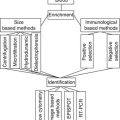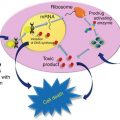36.
McCormick DL, Adamowski CB, Fiks A, Moon RC. Life time dose response relationship for mammary tumor induction by a single administration of MNU. Cancer Res. 1981;41:1690–4.PubMed
37.
Thompson HJ, Singh M. Rat models of premalignant breast disease. J Mammary Gland Biol Neoplasia. 2000;5(4):409–20.PubMed
38.
Neve RM, Chin K, Fridlyand J, Yeh J, Baehner FL, Fevr T, et al. A collection of breast cancer cell lines for the study of functionally distinct cancer subtypes. Cancer Cell. 2006;10:515–27.PubMedPubMedCentral
39.
Cember H, Johnson T. Introduction to health physics. 4th ed. New York: McGraw-Hill Medical; 2008.
41.
Martin A, Harbison SA. An introduction to radiation protection. 3rd ed. London: Chapman and Hall; 1987.
42.
Turner JE. Atoms, radiation, and radiation protection. 3rd ed. Weinheim: Wiley; 2007.
43.
Cardis E, Kesminiene A, Ivanov V, Malakhova I, Shibata Y, Khrouch V, et al. Risk of thyroid cancer after exposure to 131I in childhood. J Natl Cancer Inst. 2005;97(10):724–32.
44.
National Academy of Science. The effects on populations of exposure to low levels of ionizing radiation. BEIR Committee on the Biological Effects of Ionizing Radiations, National Research Council. Somatic effects: Cancer. Washington, D.C: National Academy Press; 1980. p. 135–58.
45.
Hancock SL, Tucker MA, Hoppe RT. Breast cancer after treatment of Hodgkin’s disease. J Natl Cancer Inst. 1993;85:25–31.PubMed
46.
Land CE, Boice JD, Shore RE, Norman JE, Tokunaga M. Breast cancer risk from low-dose exposures to ionizing radiation: results of parallel analysis of three exposed populations of women. J Natl Cancer Inst. 1980;65:353–76.PubMed
47.
Imaoka T, Nishimura M, Iizuka D, Daino K, Takabatake T, Okamoto M, et al. Radiation-induced mammary carcinogenesis in rodent models: what’s different from chemical carcinogenesis? J Radiat Res. 2009;50:281–93.PubMed
48.
Broerse JJ, Hennen LA, Klapwijk WM, Solleveld HA. Mammary carcinogenesis in different rat strains after irradiation and hormone administration. Int J Radiat Biol. 1987;51:1091–100.
49.
Vargo-Gogola T, Rosen JM. Modelling breast cancer: one size does not fit all. Nat Rev Cancer. 2007;7:659–72.PubMed
50.
Kenny PA, Lee GY, Myers CA, Neve RM, Semeiks JR, Spellman PT, et al. The morphologies of breast cancer cell lines in three-dimensional assays correlate with their profiles of gene expression. Mol Oncol. 2007;1(1):84–96.PubMedPubMedCentral
51.
Hagemann T, Robinson SC, Schulz M, Trümper L, Balkwill FR, Binder C. Enhanced invasiveness of breast cancer cell lines upon co-cultivation with macrophages is due to TNF-α dependent up-regulation of matrix metalloproteases. Carcinogenesis. 2004;25:1543–9.PubMed
52.
Goswami S, Sahai E, Wyckoff JB, Cammer M, Cox D, Pixley FJ, et al. Macrophages promote the invasion of breast carcinoma cells via a colony-stimulating factor-1/epidermal growth factor paracrine loop. Cancer Res. 2005;65:5278–83.PubMed
53.
Pukrop T, Klemm F, Hagemann T, Gradl D, Schulz M, Siemes S, et al. Wnt 5a signaling is critical for macrophage-induced invasion of breast cancer cell lines. Proc Natl Acad Sci U S A. 2006;103:5454–9.PubMedPubMedCentral
54.
Andrechek ER, Nevins JR. Mouse models of cancers: opportunities to address heterogeneity of human cancer and evaluate therapeutic strategies. J Mol Med. 2010;88:1095–100.PubMedPubMedCentral
55.
Isaacson JH, Cattanach BM. Report. Mouse News Lett. 1962;27:31.
56.
Kindred B. Antibody response in genetically thymus-less nude mice injected with normal thymus cells. J Immunol. 1971;107:1291–5.PubMed
57.
Bosma MJ, Carroll AM. The SCID mouse mutant: definition, characterization, and potential uses. Annu Rev Immunol. 1991;9:323–50.PubMed
58.
Nakajima PB, Bosma MJ. Variable diversity joining recombination: nonhairpin coding ends in thymocytes of SCID and wild type mice. J Immunol. 2002;169:3094–104.PubMed
59.
Gandhi A, Holland PA, Knox WF, Potten CS, Bundred NJ. Effects of a pure antiestrogen on apoptosis and proliferation within human breast ductal carcinoma in situ. Cancer Res. 2000;60:4284–8.PubMed
60.
Chan KC, Knox WF, Gee JM, Morris J, Nicholson RI, Potten CS, Bundred NJ. Effect of epidermal growth factor receptor tyrosine kinase inhibition on epithelial proliferation in normal and premalignant breast. Cancer Res. 2002;62:122–8.PubMed
61.
Zan Y, Haag JD, Chen KS, Shepel LA, Wigington D, Wang YR, et al. Production of knockout rats using ENU mutagenesis and a yeast-based screening assay. Nat Biotechnol. 2003;21:645–51.PubMed
62.
Hurst J, Maniar N, Tombarkiewicz J, Lucas F, Roberson C, Steplewski Z, et al. A novel model of a metastatic human breast tumor xenograft line. Br J Cancer. 1993;68:274–6.PubMedPubMedCentral
64.
O’Hare MJ. Breast cancer. In: Masters JRW, editor. Human cancer in primary culture, a handbook. London: Kluwer Academic Publishers; 1991. p. 271–86.
65.
Sultan AS, Xie J, LeBaron MJ, Ealley LE, Nevalainen MT, Rui H. Stat5 promotes homotypic adhesion and inhibits invasive characteristics of human breast cancer cells. Oncogene. 2005;24(5):746–60.PubMed
66.
Yang J, Guzman R, Nandi S. Histomorphologically intact primary human breast lesions and cancers can be propagated in nude mice. Cancer Lett. 2000;159:205–10.PubMed
67.
Hahn WC, Weinberg RA. Modelling the molecular circuitry of cancer. Nat Rev Cancer. 2002;2:331–41.PubMed
68.
Parmar H, Young P, Emerman JT, Neve RM, Dairkee S, Cunha GR. A novel method for growing human breast epithelium in vivo using mouse and human mammary fibroblasts. Endocrinology. 2002;143:4886–96.PubMed
69.
Elenbaas B, Spirio L, Koerner F, Fleming MD, Zimonjic DB, Donaher JL, et al. Human breast cancer cells generated by oncogenic transformation of primary mammary epithelial cells. Genes Dev. 2001;15:50–65.PubMedPubMedCentral
70.
Shekhar MPV, Werdell J, Santner SJ, Pauley RJ, Tait L. Breast stroma plays a dominant regulatory role in breast epithelial growth and differentiation: implications for tumor development and progression. Cancer Res. 2001;61:1320–6.PubMed
71.
O’Hare MJ, Bond J, Clarke C, Takeuchi Y, Atherton AJ, Berry C, et al. Conditional immortalization of freshly isolated human mammary fibroblasts and endothelial cells. Proc Natl Acad Sci U S A. 2001;98:646–51.PubMedPubMedCentral
72.
Hennighausen L, Robinson GW. Think globally, act locally: the making of a mouse mammary gland. Genes Dev. 1998;12:449–55.PubMed
Stay updated, free articles. Join our Telegram channel

Full access? Get Clinical Tree






